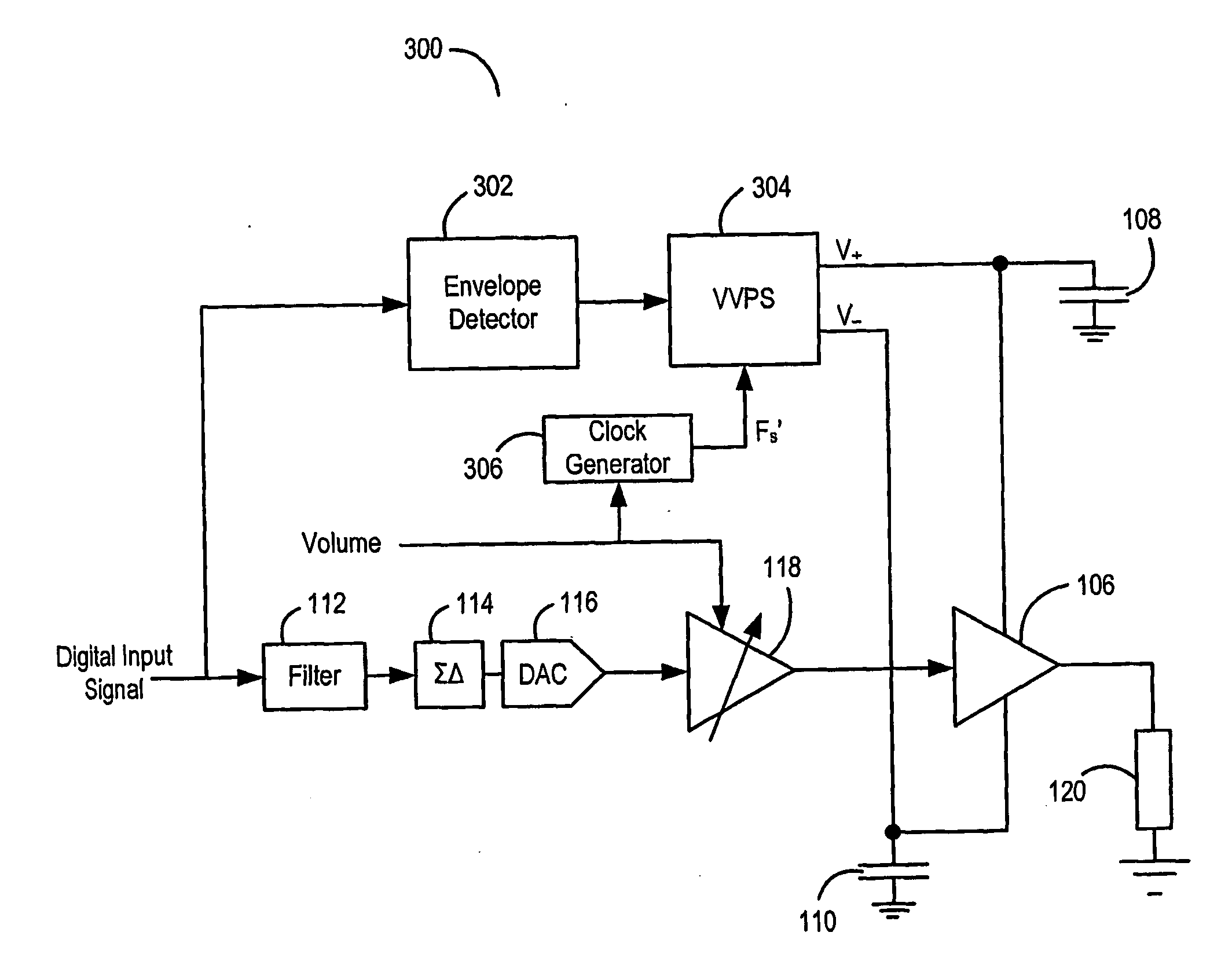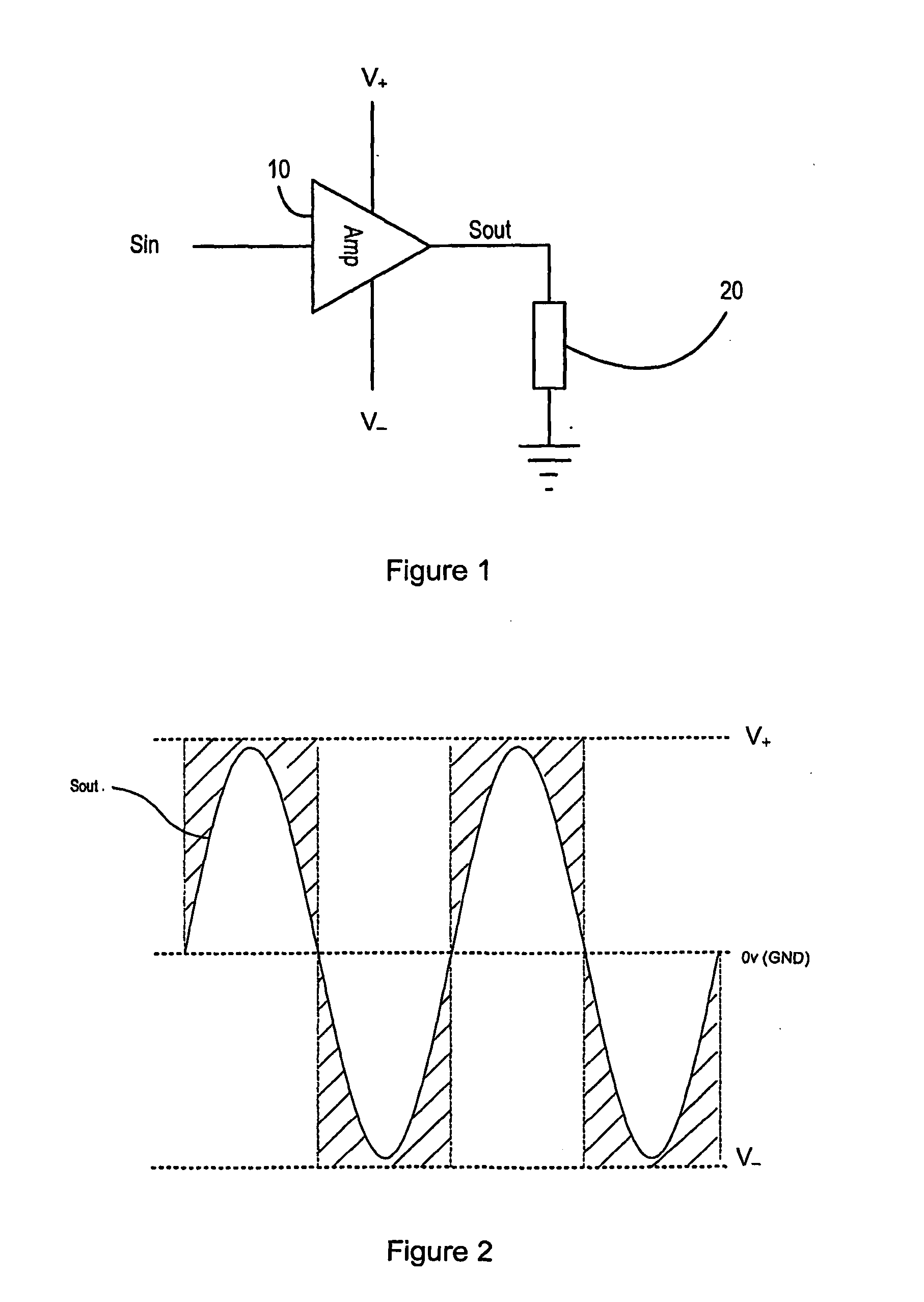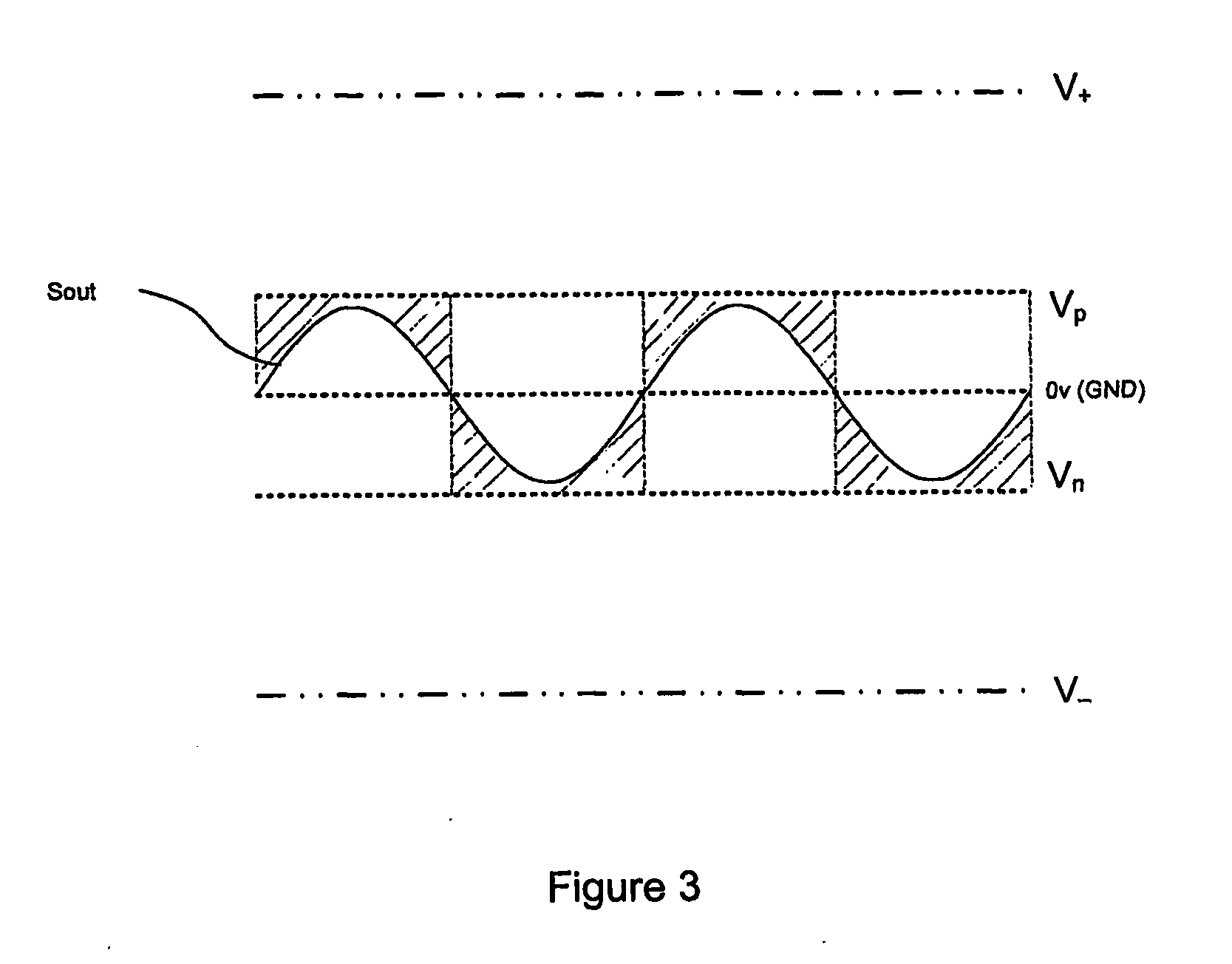Amplifier circuit
a technology of amplifier circuit and amplifier, which is applied in the direction of low frequency amplifier, gain control, digital/coded signal control, etc., can solve the problems of large amount of power expended by amplifier, distortion of signal, and worse distortion of delayed signal
- Summary
- Abstract
- Description
- Claims
- Application Information
AI Technical Summary
Problems solved by technology
Method used
Image
Examples
Embodiment Construction
[0038]FIG. 6 shows an amplifier 100 for use in amplifying audio signals according to one aspect of the present invention. However, it will be appreciated that the amplifier 100 can be used for amplifying many other types of signal.
[0039]The amplifier 100 receives a digital input signal to be amplified. The digital input signal is input to an envelope detector 102. The envelope detector 102 detects the size of the envelope of the digital input signal and outputs a control signal 103 to a variable voltage power supply (VVPS) 104. The control signal 103 output to the VVPS 104 is indicative of the size of the detected envelope. The VVPS 104 in turn provides two voltages V+ and V− to a power amplifier 106 by charging respective capacitors 108, 110. As the control signal 103 from the envelope detector 102 varies, the voltages V+ and V− supplied by the VVPS 104 vary such that a control signal indicative of a relatively large envelope will lead to a relatively high voltage supplied to the p...
PUM
 Login to View More
Login to View More Abstract
Description
Claims
Application Information
 Login to View More
Login to View More - R&D
- Intellectual Property
- Life Sciences
- Materials
- Tech Scout
- Unparalleled Data Quality
- Higher Quality Content
- 60% Fewer Hallucinations
Browse by: Latest US Patents, China's latest patents, Technical Efficacy Thesaurus, Application Domain, Technology Topic, Popular Technical Reports.
© 2025 PatSnap. All rights reserved.Legal|Privacy policy|Modern Slavery Act Transparency Statement|Sitemap|About US| Contact US: help@patsnap.com



